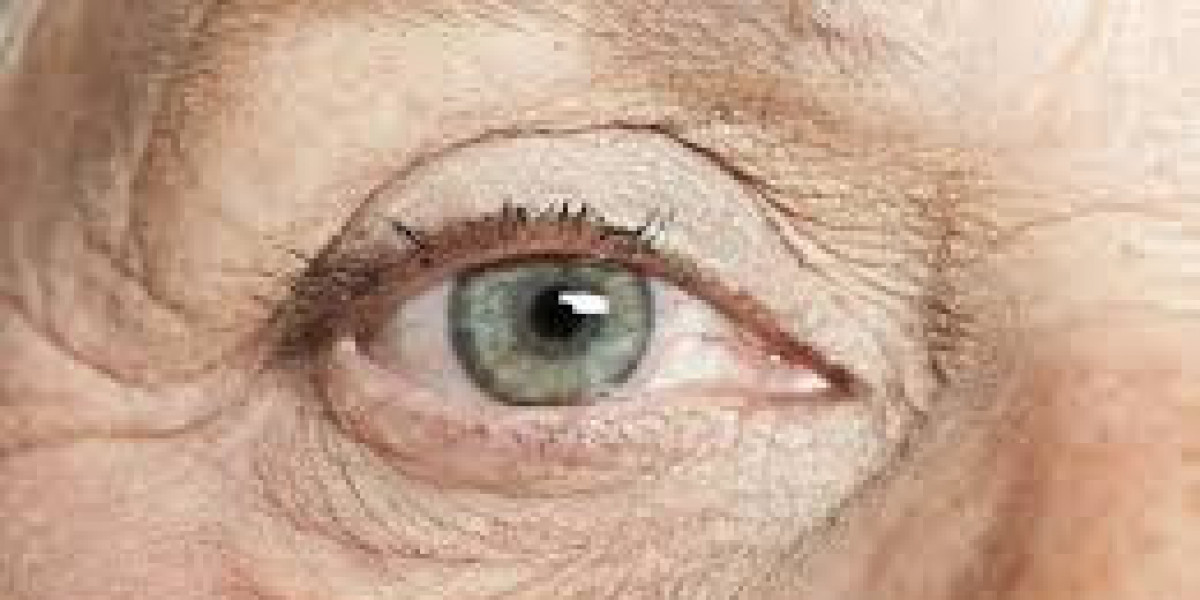Global Age-Related Macular Degeneration Market Analysis
The Global Age-Related Macular Degeneration (AMD) Market is projected to reach US$ 19.53 billion by 2032, growing at a compound annual growth rate (CAGR) of 6.94% from 2024 to 2032. In 2023, the market size was estimated at US$ 10.68 billion. This growth is driven by an aging global population that is more susceptible to AMD, along with various risk factors such as genetic predisposition, high blood pressure, smoking, prolonged exposure to blue light, obesity, and poor dietary habits.
Request a free sample copy of the report: https://www.renub.com/age-related-macular-degeneration-market-p.php
Market Outlook: Rising Prevalence of AMD
Age-Related Macular Degeneration (AMD) is a progressive eye condition that affects the macula, the central part of the retina, and leads to loss of central vision. Central vision is essential for activities like reading, driving, recognizing faces, and perceiving color. AMD progresses in two primary forms: wet AMD (neovascular or exudative) and dry AMD (atrophic or non-neovascular).
According to the World Health Organization (WHO), AMD affected approximately 196 million people worldwide in 2020, a number that is expected to rise to 288 million by 2040. About 10.4 million people suffer from moderate to severe vision impairment due to AMD. The increase in the aging population, particularly in developed nations, is contributing to a growing number of individuals at risk, making the demand for AMD treatments more urgent.
Market Size and Growth Drivers
1. Aging Population
One of the primary factors driving the growth of the AMD market is the increasing global aging population. Age is the most significant risk factor for developing AMD, with people over 50 being particularly vulnerable. The growing elderly population, especially in developed regions, is contributing to the rising prevalence of AMD. This demographic shift is creating a greater need for diagnostic tools, therapies, and long-term care for AMD patients.
2. Technological Advancements
Advancements in diagnostic technology have revolutionized the way AMD is detected and managed. Tools like optical coherence tomography (OCT) and fundus imaging have made it possible to accurately diagnose, monitor, and track AMD progression. These technologies enable early intervention, which can slow the progression of the disease and preserve vision.
In terms of treatment, anti-VEGF therapies, such as ranibizumab, aflibercept, and bevacizumab, have had a significant impact on the management of wet AMD. These therapies work by inhibiting the vascular endothelial growth factor (VEGF), which is responsible for the abnormal growth of blood vessels in the retina that causes vision loss.
Additionally, gene therapies and regenerative medicine offer new opportunities for personalized and more effective treatments for AMD. The development of these therapies broadens the spectrum of options available for patients, improving outcomes and expanding treatment options for both dry and wet AMD.
3. Rising Risk Factors
Several risk factors are contributing to the increasing incidence of AMD. These include genetic predisposition, smoking, high blood pressure, prolonged exposure to blue light, obesity, and poor dietary habits. Modern lifestyles, which often involve excessive screen time and unhealthy eating, are exacerbating these risk factors, further driving the prevalence of AMD.
4. Awareness and Screening
With increasing awareness of AMD, many health organizations and governments are promoting early screening for individuals over 50. Early detection is crucial for managing the condition and preventing vision loss. The American Macular Degeneration Foundation (AMDF) and other organizations are actively working to educate both healthcare providers and patients about the importance of early diagnosis and treatment.
Regional Insights: North America Leading the Market
The North American market for AMD is the largest, with the United States being the key player. The growth in this region can be attributed to the increasing number of elderly individuals suffering from AMD, the presence of major pharmaceutical companies, and the availability of advanced treatment options.
In the United States, about 1.5 million people suffer from advanced or late-stage AMD, while 18.3 million people have early-stage AMD. The incidence of AMD increases significantly with age, with 30% of Americans over 80 having early AMD, and 10% having late AMD. The market is supported by strong demand for treatments and ongoing research into new therapies. However, the high cost of treatments and disparities in access to care present ongoing challenges.
Competitive Landscape: Key Players in the AMD Market
The AMD market is highly competitive, with numerous pharmaceutical companies involved in the development of treatments and therapies. Some of the leading players in the market include:
- Hoffmann-La Roche Ltd.
- Bayer AG
- AbbVie
- GSK Plc
- Novartis AG
- Regeneron Pharmaceuticals
- Bausch Health Companies Inc.
- Alimera Sciences Inc.
These companies are engaged in various research and development initiatives aimed at improving current treatments and discovering new ones. Additionally, collaborations and mergers between these companies are accelerating the pace of innovation in AMD therapies.
Recent Market Developments
The AMD market has seen several important developments in 2024, with new treatments and drug approvals expected to shape the future of the industry:
- In March 2024, Roche Pharma India launched Vabysmo (faricimab), a dual-pathway inhibitor designed to treat both diabetic macular edema (DME) and wet AMD. This new medicine marks Roche’s first entry into the ophthalmology market and addresses two major retinal diseases.
- In August 2024, Astellas Pharma received FDA approval for IZERVAY™ (avacincaptad pegol), a novel treatment for geographic atrophy (GA) secondary to AMD. This new drug demonstrated significant clinical efficacy in reducing the progression of GA, marking a major breakthrough in AMD treatment.
Challenges and Opportunities in the Market
Despite the promising growth prospects, the AMD market faces several challenges, including high treatment costs, access to care, and the complexity of early detection. However, the continuous advancement of diagnostic and therapeutic technologies presents opportunities for market players to overcome these challenges.
Emerging treatments, such as gene therapies and regenerative medicine, offer personalized approaches to AMD care, potentially leading to better outcomes for patients. Additionally, the increasing adoption of telemedicine and home-based monitoring tools could help address access issues and improve early diagnosis, which is crucial for better long-term outcomes.
Related Report :
Chronic Obstructive Pulmonary Disease (COPD) Market
About the Company:
Renub Research is a Market Research and Consulting Company. We have more than 15 years of experience especially in international Business-to-Business Researches, Surveys and Consulting. We provide a wide range of business research solutions that helps companies in making better business decisions. We partner with clients in all sectors and regions to identify their highest-value opportunities, address their most critical challenges, and transform their businesses. Our wide clientele comprises major players in Healthcare, Travel and Tourism, Food Beverages, Power Energy, Information Technology, Telecom Internet, Chemical, Logistics Automotive, Consumer Goods Retail, Building, and Construction, Agriculture. Our core team is comprised of experienced people holding graduate, postgraduate, and Ph.D. degrees in Finance, Marketing, Human Resource, Bio-Technology, Medicine, Information Technology, Environmental Science, and many more.
Media Contact:
Company Name: Renub Research
Contact Person: Rajat Gupta, Marketing Manager
Phone No: +91-120-421-9822 (IND) | +1-478-202-3244 (USA)
Email: mailto:rajat@renub.com









